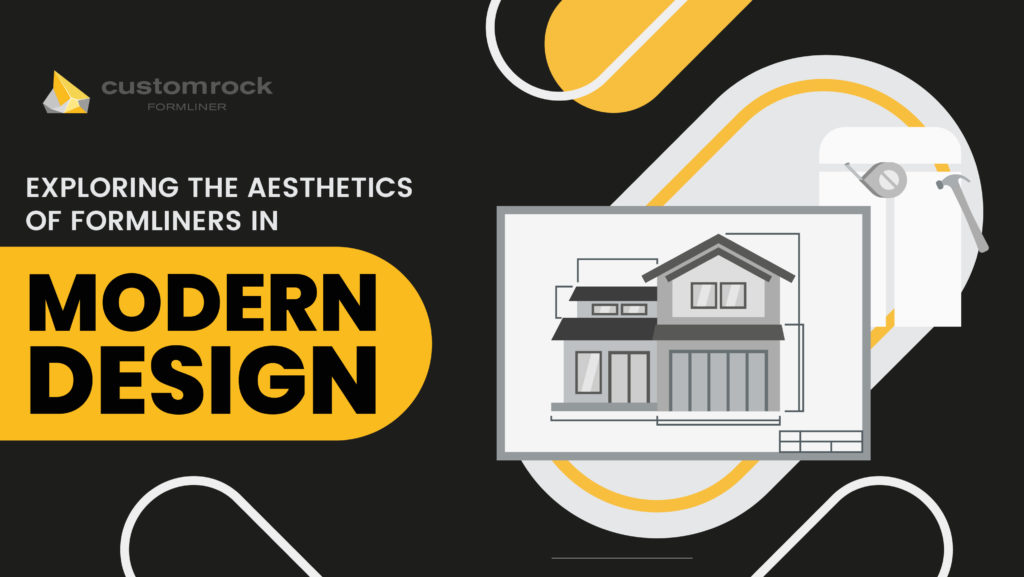Exploring the Aesthetics of Formliners in Modern Design
Formliners play a vital role in modern design aesthetics. These flexible molds are used to create unique and visually appealing patterns on concrete structures. The application of formliners allows architects to:
-
- Add depth and dimension
-
- Add details to the structure
-
- Offer customized designs
-
- Transform ordinary structures
Formliners can elevate the visual appeal and overall aesthetics of architectural works.
They offer intricate patterns, customization, and integration with modern materials to make any project stand out from the rest.
6 Ways Formliners Enhance the Aesthetics of Modern Design

Formliners play a vital role in improving the aesthetics of a modern design and ensuring client satisfaction. There are numerous ways they achieve this feat which include:
1. Detailed Patterns and Designs
Formliners provide architects with an opportunity to add detailed patterns and designs on concrete surfaces. These patterns and designs add an element of detail to a building’s appearance.
Formliners offer plenty of pre-designed patterns and textures. Architects can choose from a wide range of natural materials such as wood and stone or adopt abstract patterns.
With the help of formliners, architects can maximize the visual appeal of a project. It can transform plain concrete surfaces into something visually captivating. It also allows architects to express their creativity and uniqueness in designs.
With formliners, they can create custom patterns and develop distinctive textures that align with clients’ expectations. The intricate patterns enhance the modern design and leave a lasting impression on viewers.
2. Expressive Design Language
Formliners also allow architects to create expressive design language in modern designs. They help in conveying unique artistic expressions through textures and patterns.
-
-
- Emotional Impact
-
Expressive design language can evoke specific feelings and emotions among the viewers. For instance, a flowing texture may express a sense of harmony while a bold geometric pattern might convey a feeling of modernity.
-
-
- Storytelling
-
Formliners can also incorporate storytelling elements into a building. Different patterns and designs can be inspired by cultural motifs, narrative themes, or historical references.
These elements have the power to tell a story and create an engaging and meaningful experience for people interacting with the building.
-
-
- Brand Identity
-
Expressive design language can be a great asset for commercial and institutional projects as it can help highlight brand identity. Architects can use patterns that align with the brand’s visual identity and create a recognizable architectural presence.
-
-
- Artistic Expression
-
With the help of formliners, architects can go beyond mediocre architectural elements and introduce artistic elements into their designs. There are several designs that architects can use, which include bold, abstract, or oriental designs.
3. Sustainable Aesthetics
Formliners contribute immensely to sustainability and provide eco-friendly alternatives to traditional building materials. Formliners can replicate the appearance of natural materials such as stone and wood.
Overall, it reduces the demand for natural resources which helps in minimizing the impact of their extraction on the environment.
Formliners also contribute to energy efficiency in construction projects. It is possible with the help simplified installation process and reduced labor requirements.
Since they help expedite the overall formwork phase, it reduces the overall energy consumption associated with construction projects.
They also help in reducing the overall waste generation during the project. They combat the traditional methods of using plywood and creating temporary molds. Ultimately, generating less waste and increasing efficiency.
4. Artistic Installations
Formliners in architectural formwork can elevate buildings into artistic expressions and help them stand out from other structures.
Formliners allow architects to explore unconventional patterns and designs that exceed traditional trends. Architectures that incorporate artistic expressions may become memorable landmarks due to their uniqueness. It makes architecture more than just a building but almost a work of art.
Artistic installations created with the help of formliners can also serve as important landmarks for a community. They can become the points of pride for the local population and add a sense of cultural identity.
It also contributes to the harmonious integration of the overall building design. Architects can skillfully integrate the formliners into the building and enhance the building aesthetics.
5. Customization
Formliners offer a high degree of customization that allows architects to tailor patterns and designs to fit a specific project. One of the best things about formliners is that they can fit any specific size and scale. Whether it is a small decorative feature or a large building facade, formliners can ensure seamless integration.
It also allows architects to compose designs according to their client’s requirements and preferences. The addition of personalized touch adds to the aesthetics of the building. The high degree of customization leads to better results for construction businesses due to a stellar client satisfaction rate.
Formliners also provide “artistic” freedom to architects since they can experiment and push their creative limits. It enables them to create unique designs and showcase their artistic vision and expertise.
6. Integration with Modern Materials
Formliners can seamlessly combine with contemporary construction materials to create amazing designs. These materials include:
- Glass
- Metal
- Concrete
- Other composite materials
The versatility enables architects to create hybrid designs by trying different combinations; merging different materials to form a cohesive structure.
They can also be integrated into building facades. With the help of different materials such as glass and metal, architects can make eye-catching facades that stand out from the rest.







